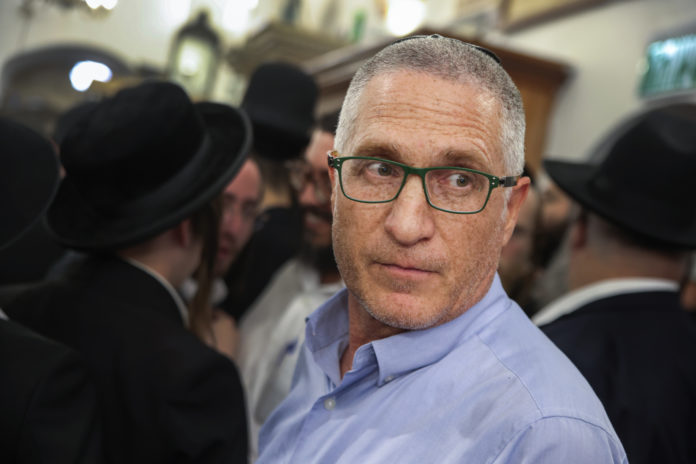
is responsible for arrangements in Meron on Lag BaOmer. After trying a number
of times, we finally arrange to meet on Thursday night in the beis midrash of
Kvutzat Yavneh, one of the last kibbutzim that is still a genuine collective. All
income goes to the kibbutz account, meals are eaten in the kibbutz dining
room, and the life is as collective as possible for a religious kibbutz.
The work is very complex, and Tessler isn’t receiving a shekel for his hard
work, so why is he doing it?
“In recent years I held the position of head of the Planning and Organization
Division of the Israel Police,” Tessler explains. “As part of my work, I was once
taken to the hadlakah held by Boyan [the main hadlakah in Meron]. Like many
who had been to Meron on Lag BaOmer over the years, I was very frightened by
what I saw, and I felt that a tragedy might be imminent. Fortunately, nothing happened that year; everything went well, as it had in years past, and I forgot all about it.
“That is, until the terrible tragedy that took place last year. I was very shaken by what happened, and I followed the investigation, as well as the proceedings of the investigative committee, very closely. After reading their preliminary decision for this year and hearing that Religion Minister Matan Kahana had been appointed as the minister responsible for the hillula, I decided to contact him.”
“You and Kahana are both former air force pilots,” I point out. “Did that ever bring the two of you into contact?”
“No. We were in different units and in different positions. Over the years I gained much organizational experience in both the army and the police force, and I wanted to pass some of that on. A friend of mine got Kahana’s number for me, and I sent him a message saying that I had some ideas I would like to share for Lag BaOmer this year. He met with me and heard what I had to say, and at the end of the meeting he said, ‘We’re looking for someone to manage the hillula of the Rashbi. Would you be interested in doing it?’ I took two days to think about it. I knew that it would be very challenging and would come with very heavy responsibility, but in the end I answered yes.”
“Minister Kahana has caused much anger in the chareidi community due to his reformation attempts in the Religion Ministry. As his representative, do you find that this relationship affects the chareidi community’s cooperation with your efforts?”
“Let me start with some background. I was appointed to this position at the beginning of January. I immediately went to check the facts on the ground and found that nothing had been done to change things in Meron, because people felt that with a minister and an investigative committee, there was no point in doing things that might turn out to be a complete waste of time once official decisions were made.
“I decided to spend my first month on the job meeting with everyone connected to Meron and Lag BaOmer, and just listen and learn. I met with chareidi activists, community leaders, journalists and more—pretty much anyone with whom I could get in touch. I also made sure to hold the first meetings away from the Religion Ministry so that they wouldn’t be hesitant to meet with me. I started every meeting almost exactly the same way

























